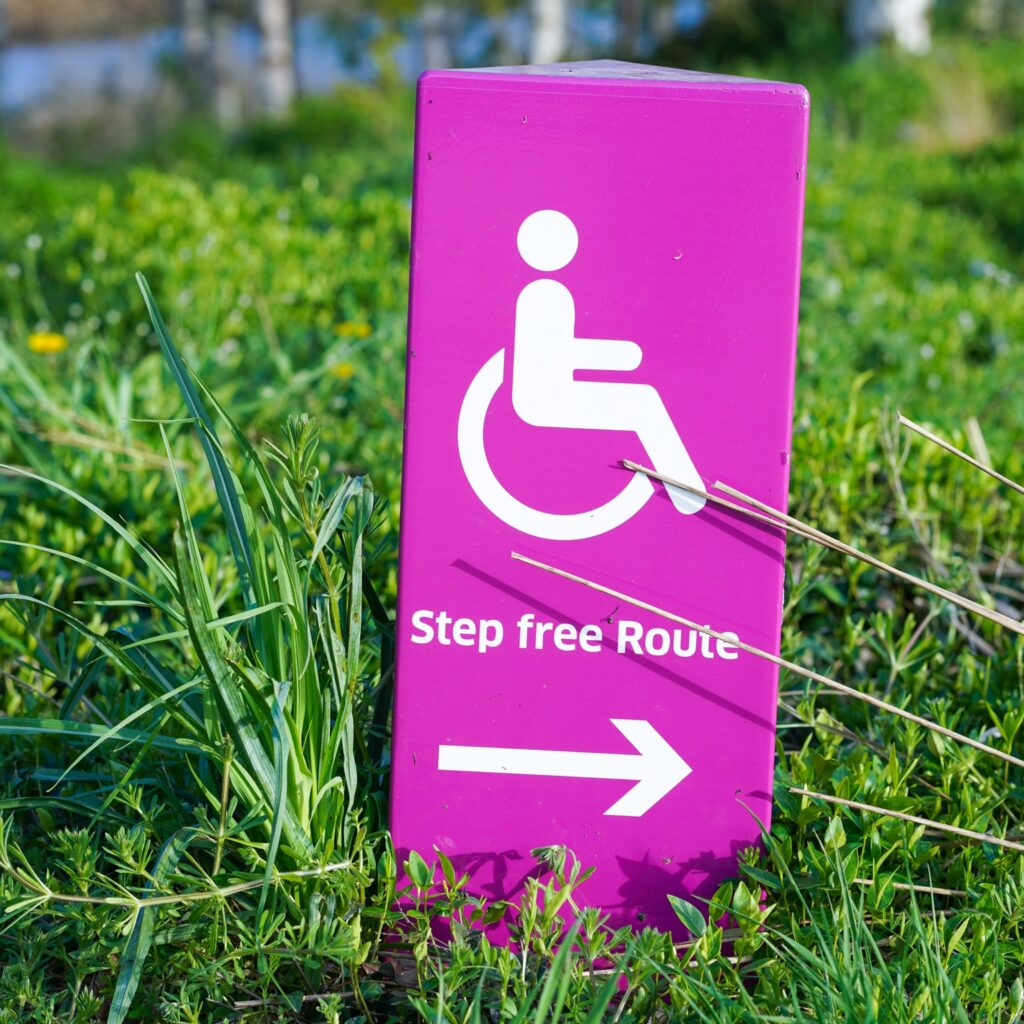In an increasingly digital world, ensuring that websites are accessible to all users is paramount. The Web Content Accessibility Guidelines (WCAG) have long been a cornerstone for making the internet more inclusive. With the release of WCAG 2.2, a new set of guidelines has emerged to further enhance accessibility. In this article, we will delve into the key features and benefits of WCAG 2.2
A Brief Overview of WCAG
WCAG, developed by the Web Accessibility Initiative (WAI) of the World Wide Web Consortium (W3C), provides a comprehensive framework to make web content more accessible for individuals with disabilities. The guidelines are designed to address various disabilities, including visual, auditory, cognitive, and motor impairments.
WCAG 2.2 is the latest iteration, succeeding WCAG 2.1, and it builds upon the foundation laid by its predecessors. Its primary objective is to create a more inclusive online environment by accommodating an even wider range of user needs and preferences.
Key Enhancements in WCAG 2.2
Focus on Mobile Accessibility
WCAG 2.2 places a greater emphasis on mobile accessibility, recognizing the increasing reliance on smartphones and tablets for internet access. With the proliferation of mobile devices, it is imperative that websites are designed with the unique challenges and capabilities of these platforms in mind. The guidelines in WCAG 2.2 are tailored to address the specific needs of mobile users, ensuring that they can navigate and interact with web content seamlessly.
Improved Cognitive Accessibility
Cognitive disabilities cover a wide spectrum of conditions, including learning disabilities, attention disorders, and intellectual impairments. WCAG 2.2 introduces new success criteria that are aimed at enhancing cognitive accessibility. These criteria focus on elements like clear instructions, simplified navigation, and predictable functionality. By incorporating these principles, websites can become more user-friendly for individuals with cognitive disabilities.
Enhanced Focus on Low Vision Accessibility
WCAG 2.2 places a greater emphasis on addressing the needs of users with low vision. This includes individuals with conditions like glaucoma, cataracts, and other visual impairments. The guidelines provide recommendations for ensuring that content is perceivable, operable, and understandable for those with limited vision. This encompasses considerations such as text size, color contrast, and adaptable layouts.
Extended Coverage for Users with Disabilities
WCAG 2.2 expands the scope of accessibility guidelines to cover more types of disabilities. This includes criteria tailored to individuals with motor disabilities, such as those who rely on assistive technologies like switches or voice commands for navigation. By addressing the unique challenges faced by users with motor impairments, WCAG 2.2 helps to create a more inclusive online experience for everyone.

Benefits of Implementing WCAG 2.2
Legal Compliance and Risk Mitigation
Adhering to WCAG 2.2 not only demonstrates a commitment to inclusivity but also helps organizations comply with legal requirements. Many countries have established regulations mandating web accessibility, and non-compliance can lead to legal repercussions. By following WCAG 2.2, businesses and institutions can mitigate the risk of legal liabilities while fostering a more inclusive online environment.
Expanded Audience Reach
Implementing WCAG 2.2 broadens the reach of a website to a wider audience. By accommodating the needs of individuals with disabilities, organizations tap into an underserved demographic. This not only leads to increased user engagement but also enhances the reputation of the website as a platform that values inclusivity.
Improved User Experience for All
The principles outlined in WCAG 2.2 are not only beneficial for individuals with disabilities but also enhance the overall user experience. Clear navigation, intuitive design, and consistent functionality benefit all users, regardless of their abilities or disabilities. By prioritizing accessibility, websites become more user-friendly and enjoyable for everyone.
Conclusion
WCAG 2.2 represents a significant step forward in the ongoing journey toward a more inclusive digital landscape. By encompassing a broader range of disabilities and addressing the unique challenges posed by mobile platforms, cognitive impairments, and low vision, WCAG 2.2 sets a new standard for web accessibility.
Implementing these guidelines not only ensures legal compliance but also opens up new opportunities for organizations to connect with a diverse audience. Moreover, it fosters a more user-friendly online environment for all, creating a web that truly belongs to everyone, regardless of their abilities or disabilities. Embracing WCAG 2.2 is a powerful testament to the values of inclusivity and equal access in the digital age.
We Offer Web & Mobile Accessibility Testing
We at ‘Accessible Zone‘ provide web, mobile and software accessibility testing services. We perform testing manually using screen reader such as JAWS, NVDA & Voiceovers. We also provide VPAT and ACR reports. If you want to use our services do contact us as at contact@accessiblezone.com or you can also schedule a free call with us from here.

[…] the proliferation of smartphones and tablets, mobile accessibility has become paramount. WCAG 2.2 places a distinct focus on ensuring that web content is equally accessible on mobile devices. It […]
[…] as primary devices for web browsing, ensuring accessibility on mobile platforms is essential. WCAG 2.2 introduces three new success criteria (2.5.7, 2.5.8, 2.5.9) that specifically address mobile […]
[…] web accessibility, such as the Americans with Disabilities Act (ADA) in the United States and the Web Content Accessibility Guidelines (WCAG) globally. Non-compliance with these regulations can result in legal consequences, including fines […]
https://t.me/pt1win/484
Актуальные рейтинги лицензионных онлайн-казино по выплатам, бонусам, минимальным депозитам и крипте — без воды и купленной мишуры. Только площадки, которые проходят живой отбор по деньгам, условиям и опыту игроков.
Следить за обновлениями можно здесь: https://t.me/s/reitingcasino
https://t.me/s/iGaming_live/4607
https://t.me/iGaming_live/4684
https://t.me/s/reyting_topcazino/14
https://t.me/of_1xbet/843
https://t.me/s/ef_beef
Ngoài ra, giao diện của josiahpak.com cũng được thiết kế phù hợp với nhiều loại thiết bị, bao gồm cả điện thoại di động. Điều này giúp người chơi có thể dễ dàng truy cập và tham gia vào các trò chơi ở bất cứ đâu và bất cứ lúc nào.
Ngoài ra, giao diện của josiahpak.com cũng được thiết kế phù hợp với nhiều loại thiết bị, bao gồm cả điện thoại di động. Điều này giúp người chơi có thể dễ dàng truy cập và tham gia vào các trò chơi ở bất cứ đâu và bất cứ lúc nào.
Ngoài ra, giao diện của josiahpak.com cũng được thiết kế phù hợp với nhiều loại thiết bị, bao gồm cả điện thoại di động. Điều này giúp người chơi có thể dễ dàng truy cập và tham gia vào các trò chơi ở bất cứ đâu và bất cứ lúc nào.
TONY20251130HOME. 888slot – cái tên top đầu trong lĩnh vực cá cược, đã chọn 888slot GAME làm đại lý chính thức để cung cấp link truy cập an toàn. Đây là đại lý được cấp quyền trực tiếp, chịu trách nhiệm cung cấp đường link 888slot ổn định và bảo mật tại Việt Nam. Để không bỏ lỡ 150.000 VNĐ tiền cược trải nghiệm miễn phí; 100% tiền nạp đầu và vô số ưu đãi độc quyền khác, hãy đăng ký tài khoản tại 888slot GAME với thông tin chính chủ ngay hôm nay.
TONY20251130HOME. 888slot – cái tên top đầu trong lĩnh vực cá cược, đã chọn 888slot GAME làm đại lý chính thức để cung cấp link truy cập an toàn. Đây là đại lý được cấp quyền trực tiếp, chịu trách nhiệm cung cấp đường link 888slot ổn định và bảo mật tại Việt Nam. Để không bỏ lỡ 150.000 VNĐ tiền cược trải nghiệm miễn phí; 100% tiền nạp đầu và vô số ưu đãi độc quyền khác, hãy đăng ký tài khoản tại 888slot GAME với thông tin chính chủ ngay hôm nay.
TONY20251130HOME. 888slot – cái tên top đầu trong lĩnh vực cá cược, đã chọn 888slot GAME làm đại lý chính thức để cung cấp link truy cập an toàn. Đây là đại lý được cấp quyền trực tiếp, chịu trách nhiệm cung cấp đường link 888slot ổn định và bảo mật tại Việt Nam. Để không bỏ lỡ 150.000 VNĐ tiền cược trải nghiệm miễn phí; 100% tiền nạp đầu và vô số ưu đãi độc quyền khác, hãy đăng ký tài khoản tại 888slot GAME với thông tin chính chủ ngay hôm nay.